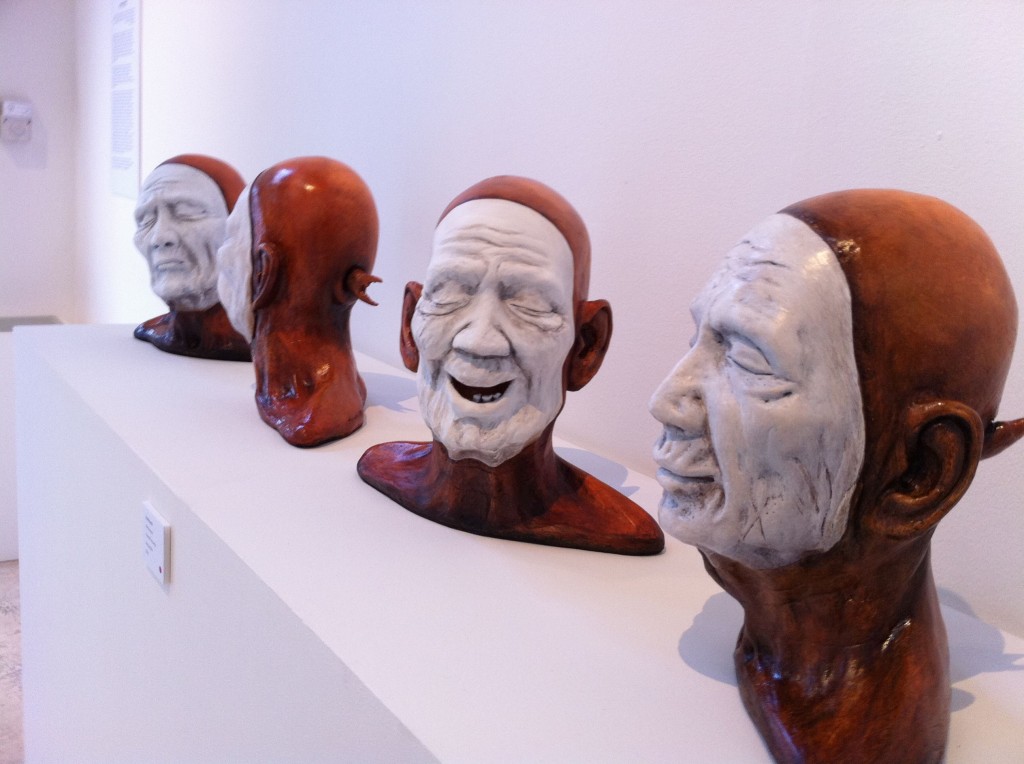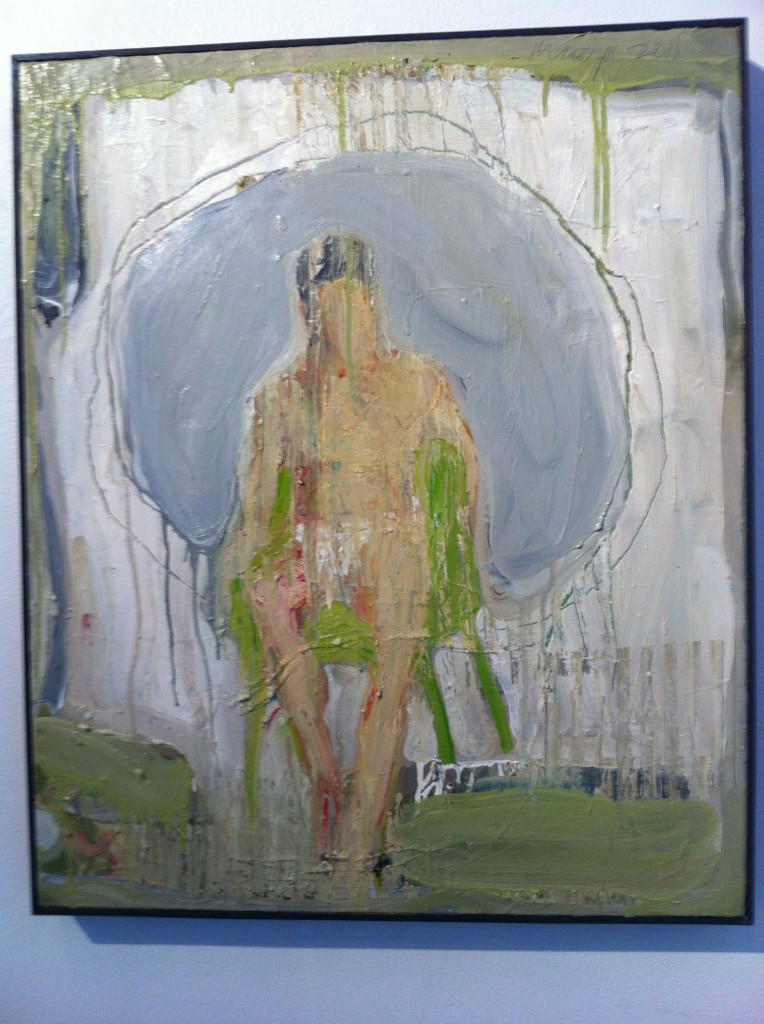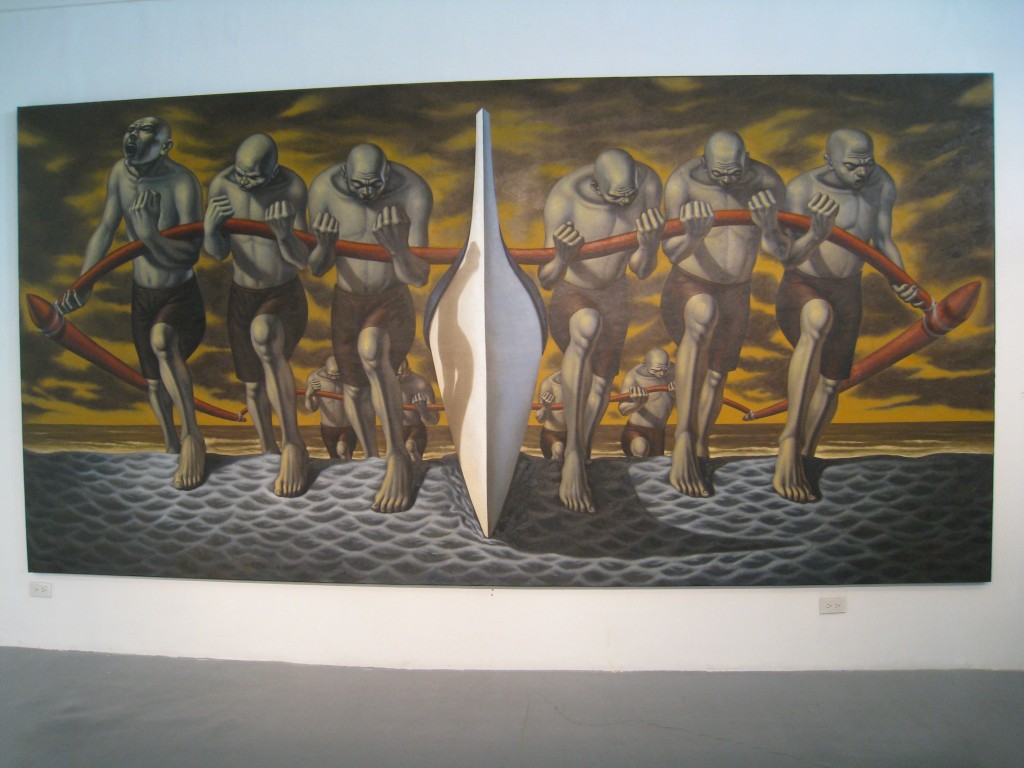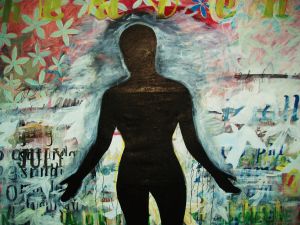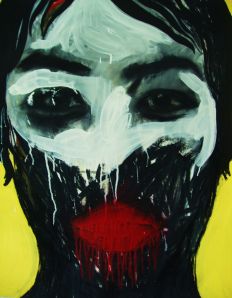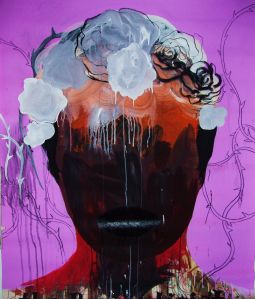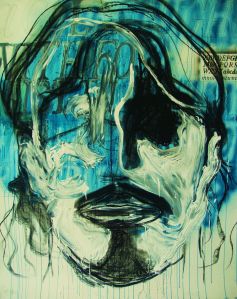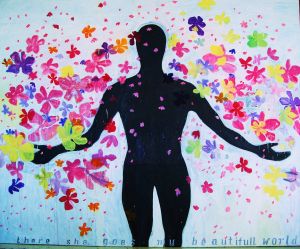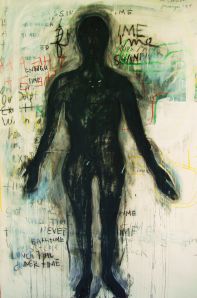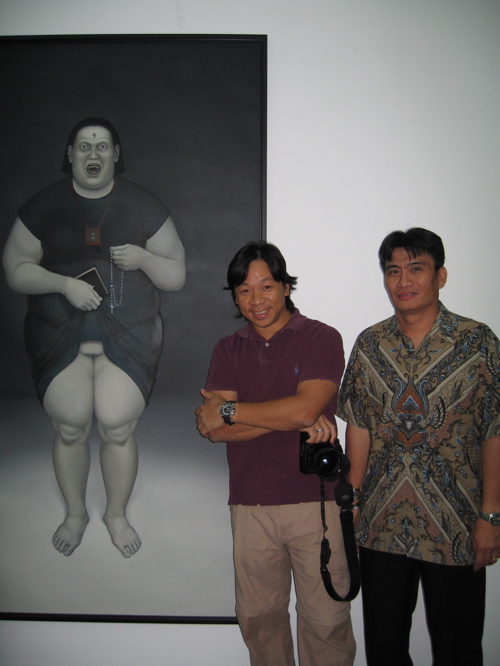
Detail, Pilipinas Street Plan mural
What do you get when the Lopez Memorial Museum allows two collectives, one hip artist, and a group that works with prison

Another detail, Pilipinas Street Plan mural
inmates to rifle through its archives and art collection? One of the best exhibits I’ve seen this year! (And I think I’ve seen quite a bit.)
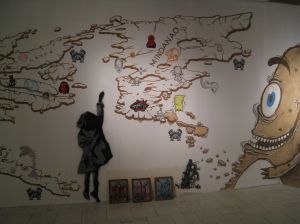
Another detail, Pilipinas Street Plan mural, a response to 1734 Velarde map of the Philippines
The curatorial team of the Lopez Museum have always been great at weaving the current into their treasure of trove of Filipino masterpieces. Eileen Legaspi-Ramirez and Chit Ramirez manage to inject their exhibits with the unexpected, coming up with an inspired mix of artists that have yet to deliver anything boring. Two years ago, they actually made Amorsolo fun. Kiri Dalena’s piece for Keeping the Faith (in 2008) also sticks out in my memory. It captured a turbulent period in Philippine history in an accessible manner, without detracting from its
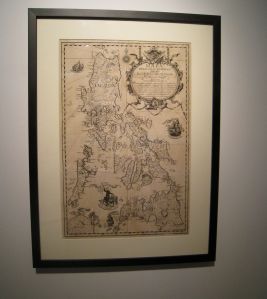
Pedro Murillo Velarde, "Mapa de las yslas Philippinas", 1734
seriousness. And now, they’ve done it again.
Extensions reiterates that a venerable institution need not get caught in a time warp. It can find novel ways to interact with a contemporary audience. Pilipinas Street Plan is made up of a core group of ten artists who believe in creating ephemeral public art. In other words, graffiti. They have made their
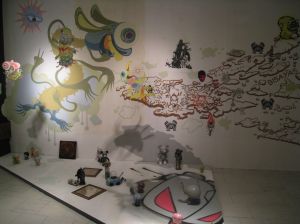
Detail, Pilipinas Street Plan mural with vinyl toys
mark in several locales around the country, adopting nom de guerres to conceal their true identities. By day, we know them as practicing visual artists whose works grace Manila’s galleries. After, they transform into street artists. The acceptance of graffiti as art is, of course, nothing new. Street artists all over the world have been legitimized into the mainstream by an accepting public. Witness how the most famous of them all, Banksy, has achieved

More vinyl toys from Pilipinas Street Plan
record auction prices for his pieces. City councils now consider his works as cultural landmarks. Perhaps having the group work on the Lopez Museum sanitizes the whole concept of graffiti as subversive, as art that appears in unexpected venues. Still, when the walls of a museum fill up with spray painted graphics juxtaposed against an 18th century map of the Philippines, a painting by Fernando Zobel, and a mixed media assemblage by National Artist J. Elizalde Navarro, you can’t help but relish the experience.
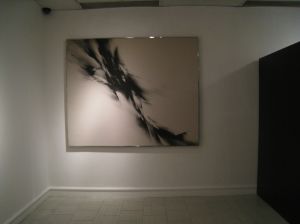
Fernando Zobel, "La Vision", 1961
The murals started out as a response to Pedro Murillo Velarde’s Mapa delas yslas Philippinas from 1734. The street artists rendered their own version of the country’s map, using stickers to mark the sites where their works can
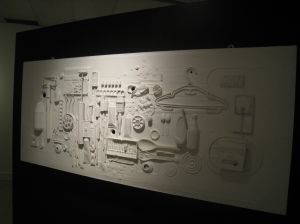
J. Elizalde Navarro, "Untitled", 1975
be found. Lightboxes and small framed pieces add detail to the painted walls. They also laid out their own versions of vinyl toys —duly graffiti-ed— on the floor. During the exhibit’s opening, cans of spray paint stood on a makeshift shelf, an encouragement to guests to add their

Detail from Pilipinas Street Plan mural
own piece of art to what had already been done.
In another area of the museum, another collective exhibited its work. Instead of reacting to a piece in the museum’s collection, Plataporma chose to respond to the geographic history of the
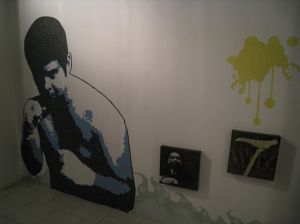
Another detail, Pilipinas Street Plan mural
museum itself. For now/here, they play video recordings of random interviews about the Lopez Museum conducted within a 1 kilometer radius of the past, present, and future museum sites. By the entrance to their exhibit space, the artists recreated a Manansala mural that had been demolished when the old museum in Pasay was torn down. To enter into their space, one crosses a short wooden bridge. This symbolizes the transition from the “old” museum to its current site. The bridge crosses over a stylized excavation site filled with mud that had actually been transported from the museum’s original location.
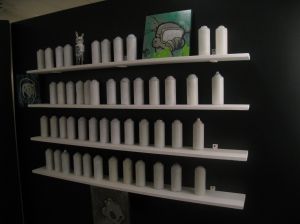
Cans of spray paint ready for use
Maya Muñoz takes over the first gallery, across the reception desk at the main entrance. The museum uses this space to house works that transit from different locations. Maya herself is an artist who works in two locales: Manila and Bicol. Her painting, Coming and Going, deals with
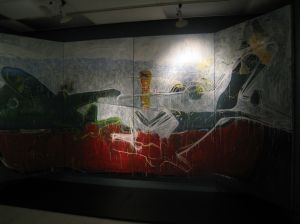
Maya Munoz, "Coming and Going", 2010
exile and home. She started this piece after she had done a series of drawings that depicted either Ninoy Aquino on the tarmac or a triumphant Manny Pacquiao, two hometown heroes who have had to leave home to achieve glory. Her massive quadriptych (its four panels measure a total of about eight feet by 16 feet) started out as a self-portrait which evolved into a painting of planes. The piece echoes the journeys inherent to the life of a person who commutes between two places she calls home.
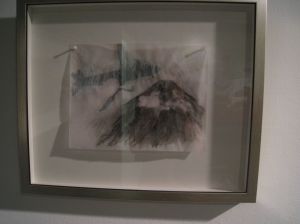
Maya Munoz, from "Days Go By" drawings series
Loob at Labas, from Rock Ed Philippines, completes the exhibition. Their volunteers have undertaken Rock The Rehas to use art, specifically creative writing, to give inmates at the National Penitentiary in
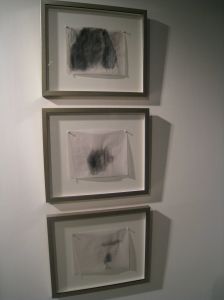
More drawings from Maya Munoz "Days Go By" series
Muntinglupa access to new experiences. Photos of the New Bilibid Prison taken from the Lopez Museum archives, crafts created by the prisoners, and objects taken from within the prison add even more power to a video that runs images of the prisoners’ written work.
Extensions runs from 11 November 2010 to 20 April 2011 at the Lopez Memorial Museum, Ground Floor, Benpres Building, Exchange Road cor. Meralco Avenue, Ortigas Center, Pasig. Phone (632) 631-2417 or visit http://www.lopez-museum.org
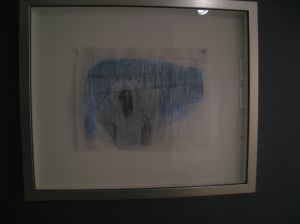
Maya Munoz, "Days Go By" drawings series
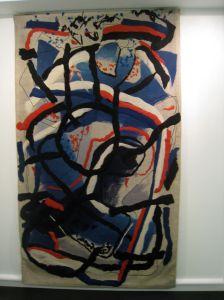
Federico Alcuaz, "Filipiny XIV", tapestry, 1983
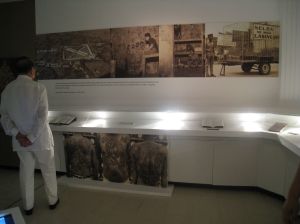
For "Loob at Labas", Rock Ed Philippines, photos from Lopez Museum archives of New Bilibid prison
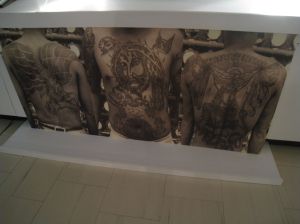
Photos from Lopez Museum archives, New Bilibid Prison
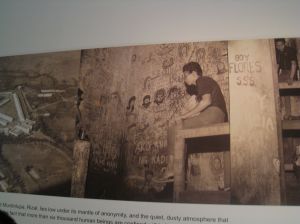
Photo from Lopez Museum archives, New Bilibid Prison
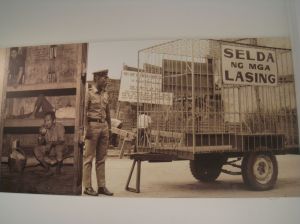
From Lopez Museum photo archives, New Bilibid Prison
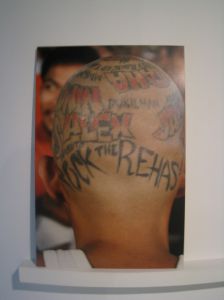
Rock the Rehas
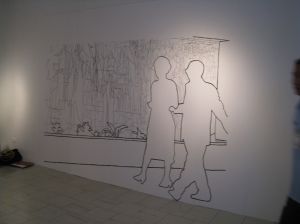
For "now/here", Plataporma recreation of Manansala Mural at old Lopez Museum in Pasay
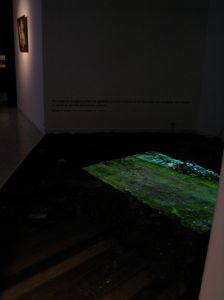
For "now/here", Plataporma installation
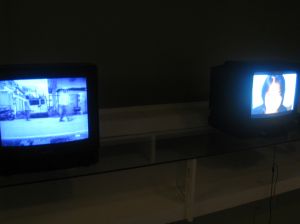
For "now/here", Plataporma videos
 http://www.youtube.com/watch?v=WT4LIRKGRtE
http://www.youtube.com/watch?v=WT4LIRKGRtE

